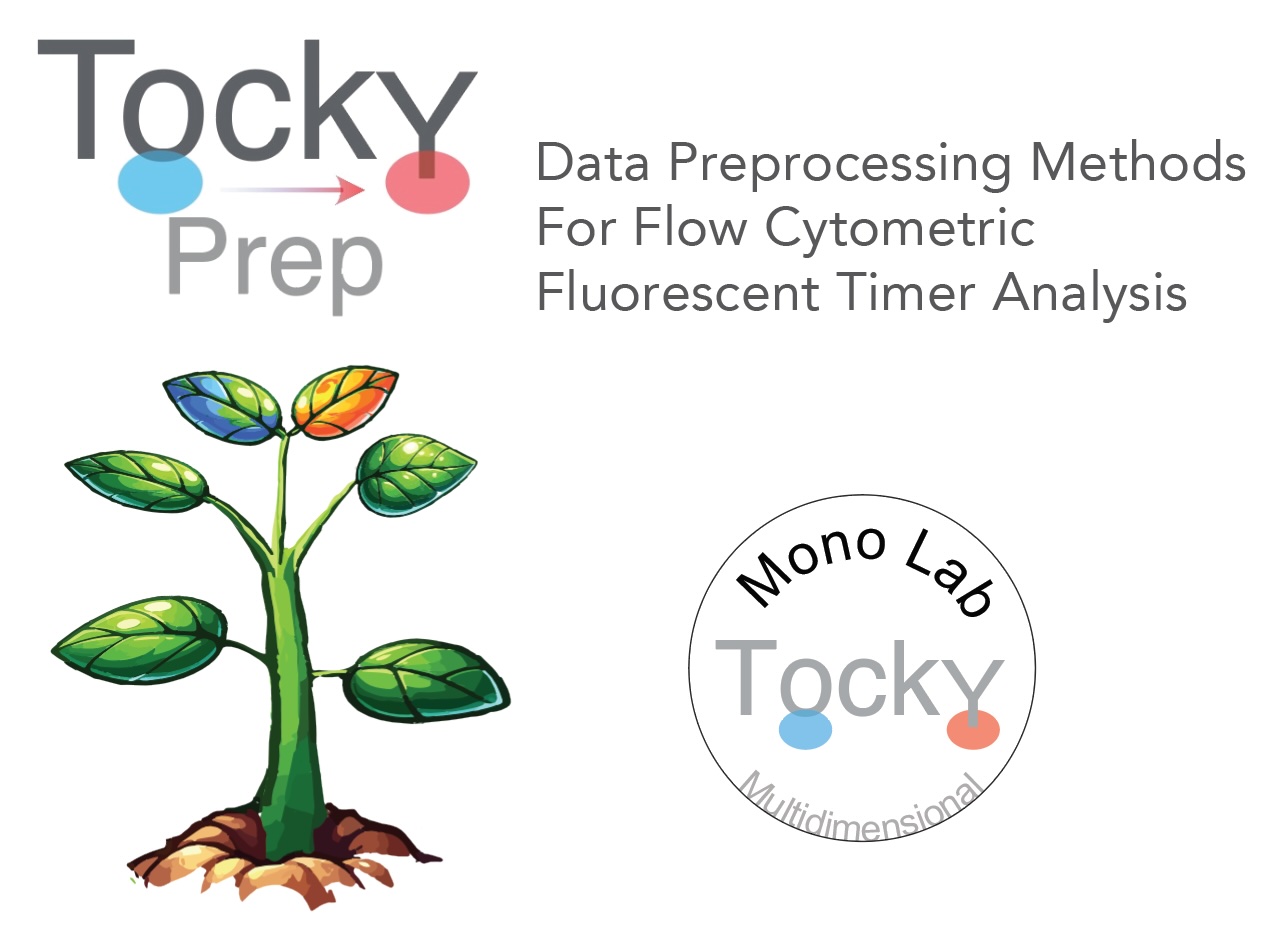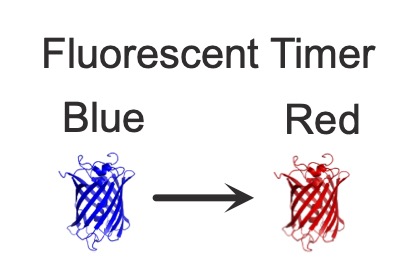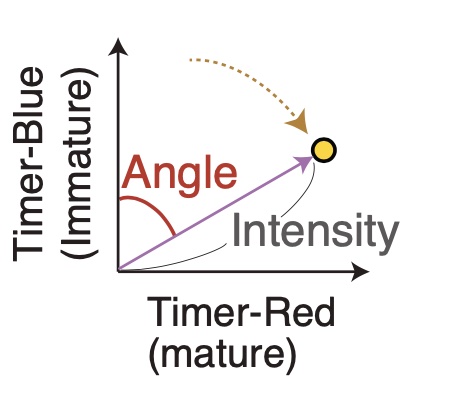Introduction to Tocky and Data Preprocessing Methods
Dr. Masahiro Ono
2025-02-08
Source:vignettes/Introduction.Rmd
Introduction.Rmd
1. Introduction
This vignette introduces the concept of Tocky.
Tocky short for “Timer-of-cell-kinetics-and-activity,” is inspired by the Japanese word “toki,” meaning “time.” It serves as a comprehensive toolkit that integrates experimental and computational approaches to analyze the temporal dynamics of cell differentiation and activation in vivo.
2. Principles of Tocky
2-1. The Use of Fluorescent Timer Protein for Investigating Cellular Dynamics
The concept of Tocky technology was conceived and created by Dr. Masahiro Ono. To measure time-dependent processes in individual T cells in vivo, Dr. Ono envisioned using a substance capable of encoding time information through its known kinetics. Through screening experiments, the mCherry mutant, Fluorescent Timer protein Fast-FT, originally developed by the Verkhusha group at Einstein (Subach et al. (2009)), emerged as an ideal candidate, particularly for its compatibility with flow cytometry.
Leveraging this feature, the Ono lab developed new Fluorescent Timer reporter transgenic mouse strains for analyzing T cell activities and differentiation in vivo. These new transgenic strains include the Nr4a3 Fluorescent Timer reporter mice for the Nr4a3 gene, which is downstream of T cell receptor signaling, and the Foxp3 gene, which is specific to regulatory T cells. To effectively analyze the data generated by the Tocky mice, Dr. Ono further developed data analytic concepts dedicated to Fluorescent Timer data, using the Trigonometric Transformation method for analyzing Fluorescent Timer data, as reported in 2018 (Bending et al., 2018). Consequently, the novel Fluorescent Timer systems for the analysis of temporal changes in molecular and cellular activities have been designated as Nr4a3-Tocky and Foxp3-Tocky.

The Fluorescent Timer protein undergoes a spontaneous and irreversible transition in its emission spectrum, shifting from blue to red fluorescence post-translation.
Our experimental measurements of fluorescence revealed that the half-life of Timer Blue fluorescence is approximately 4 hours, whereas the half-life of Timer Red fluorescence extends to about 120 hours (Bending et al., 2018).
2-2. Tocky Data Transformation
The primary objective of the Tocky approach is to analyze the time-related information captured in the profiles of Timer-Blue and Timer-Red fluorescence data at the individual cell level.
To optimally utilize this temporal information in single-cell analysis, we have introduced a novel concept along with appropriate algorithms. These tools are designed to normalize and transform Timer fluorescence data into two key metrics: Timer Angle and Timer Intensity.

Timer Angle is defined as the angle (in degrees, ranging from 0 to 90) measured from the Timer-Blue axis towards the Timer-Red axis. Timer Intensity represents the distance (or norm) from each cell to the origin (where Timer-Blue = Timer-Red = 0).
Normalized and trigonometric-transformed Timer fluorescence data offer opportunities to analyze real-time transcriptional activities and cumulative (historical) activities observed in the days leading up to the experimental analysis of cells, as demonstrated in our previous reports (Bending, Martı́n, et al. (2018); Bending, Paduraru, et al. (2018)).

